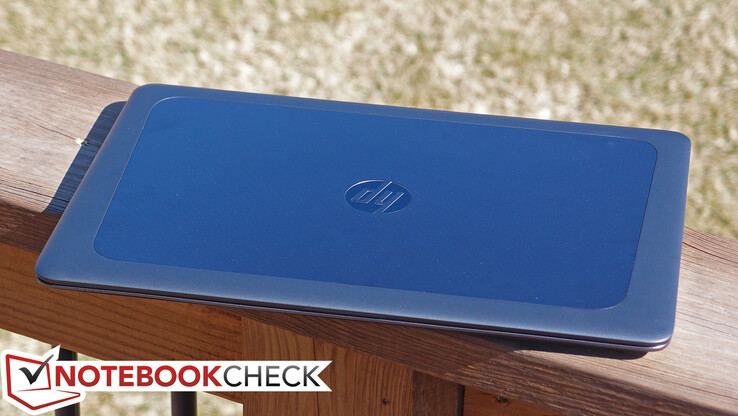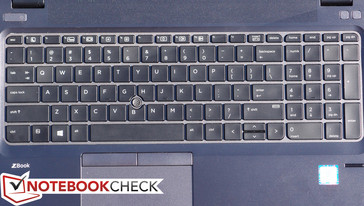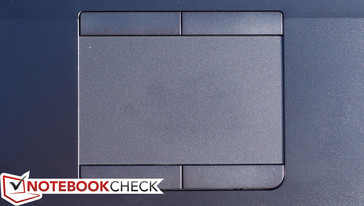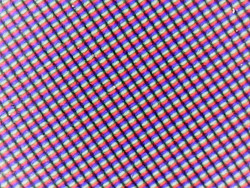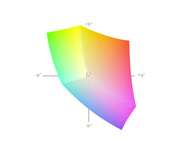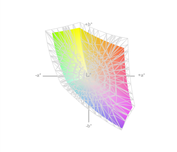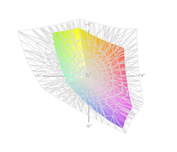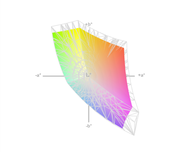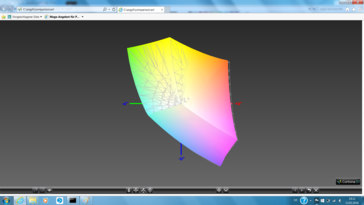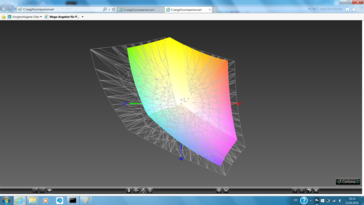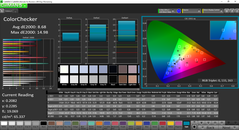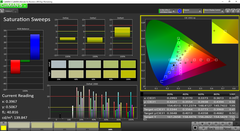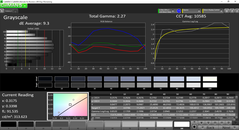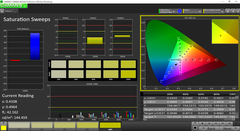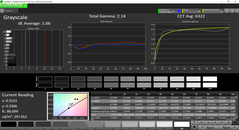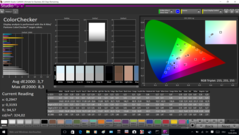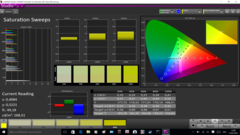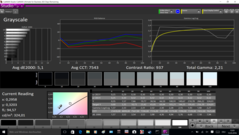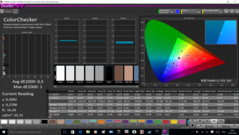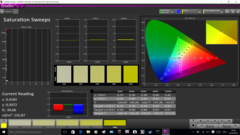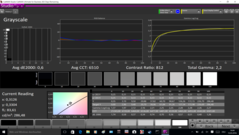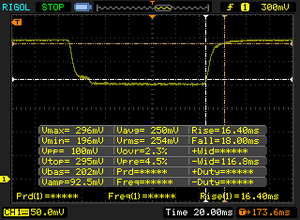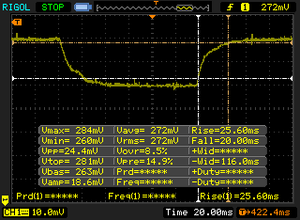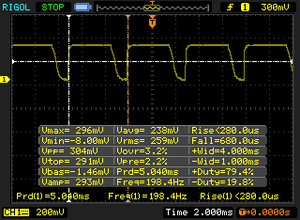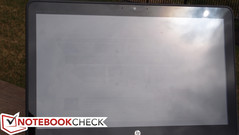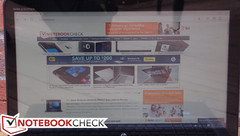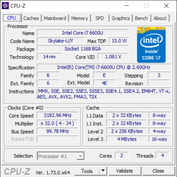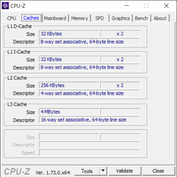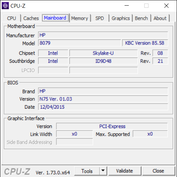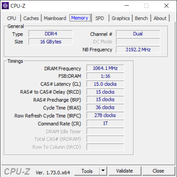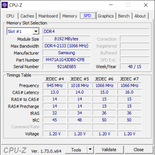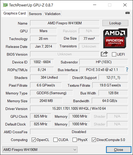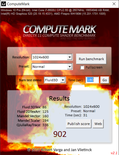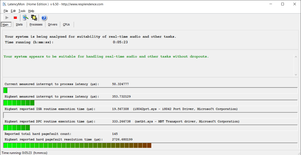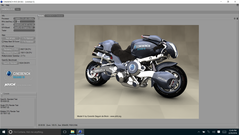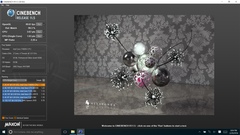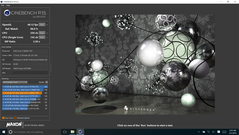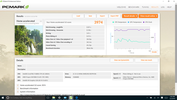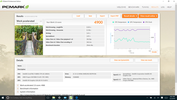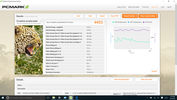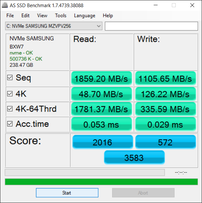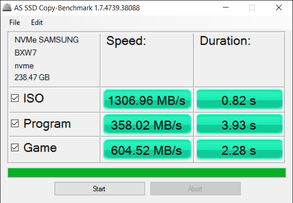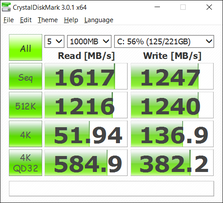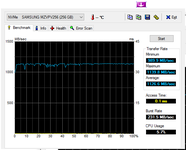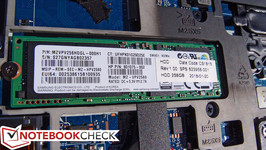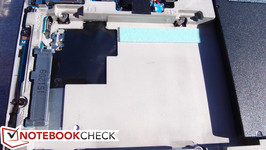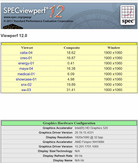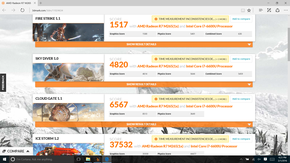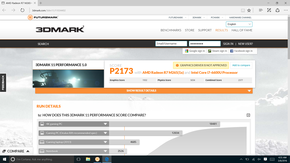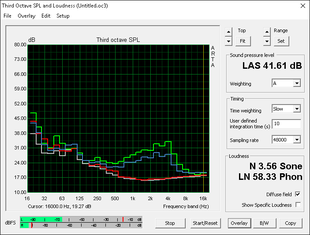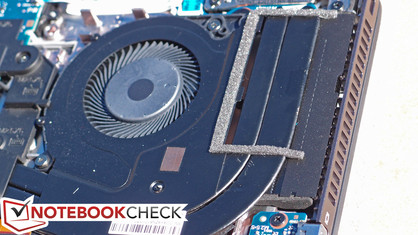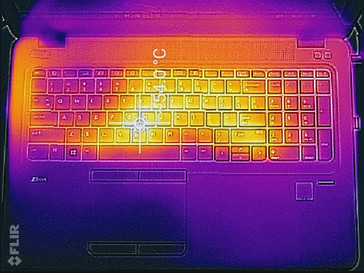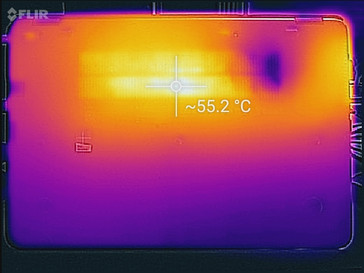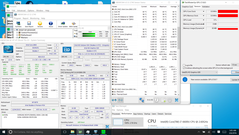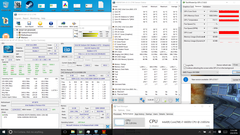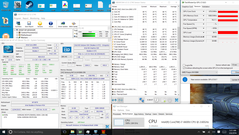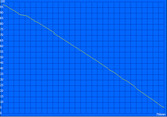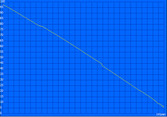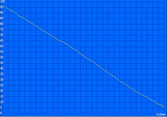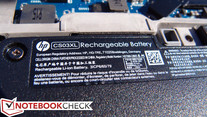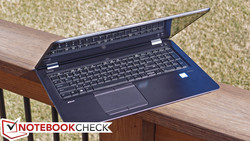HP ZBook 15u G3 Workstation Review

As the trend toward thinner and lighter mobile workstations continues to sweep through the market, HP has issued another update to their popular ZBook 15u series with a chipset refresh and renewed port selection topping the list of alterations. The ZBook 15u G3 directly competes with the formidable Dell Precision M5510 and the larger Lenovo ThinkPad W550s, both of which scored very highly in our testing.
Under the hood of our review unit is an Intel Core i7-6600U dual-core CPU, 16 GB DDR4 RAM, a 256 GB NVMe SSD, and an AMD Firepro W4190M with 2 GB GDDR5 VRAM to accompany the integrated Intel HD Graphics 520. While it’s no quad-core processor like those in the Precision M5510, the Core i7-6600U should provide ample horsepower for most users, especially when paired with a dedicated workstation graphics adapter and the NVMe SSD and 16 GB of DDR4 RAM. Pricing is fair for a workstation at around $1350 for our particular configuration. Let’s see how the ZBook handles our unprecedented array of benchmarks and tests.
Case
The ZBook 15u G3 is clad in a magnesium-reinforced casing that feels both comfortable and relatively solid, while remaining lightweight (at just 2.166 kg). It doesn’t seem to be as heavy-duty as, say, an Apple MacBook or Dell Precision, but there’s very little yield in the base unit nevertheless. The display lid features a soft-touch paint around the perimeter, which is a nice touch (and nice to touch!), with a stylish yet still rather subdued aluminum insert in the middle. Only the larger-than-average shiny metallic HP logo belies somewhat the typical styling of a business notebook.
The display lid is thin yet rigid, and it does a good job of resisting twisting or pressure from the back. The hinges, meanwhile, are loose enough for the lid to be opened using only one hand, while still remaining sufficiently tight to keep it from bouncing around during typing or tapping.
For the most part, the design is practical yet attractive. One complaint however is the rather sharp edge on the front of the palm rest; while the metal here fits in well with the rest of the design and is comfortable to the touch, it also could benefit from some sort of edge liner. Dell’s Precision M5510, for example, does a good job balancing thinness and metal construction with comfort by applying a patterned soft-touch paint to the surface of the keyboard surround and palm rest.
Regardless, overall, HP has also done a good job balancing its priorities; the ZBook 15u G3 is both sturdy and stylish, lightweight and rigid.
Connectivity
Lining the perimeter of the ZBook 15u is a pretty solid assortment of critical ports, including two USB 3.0 ports and a USB 3.1 (Gen 1) Type-C port. In addition, the full-sized DisplayPort and VGA port are appreciated considering the target market. Easy to miss is the SIM slot, the SD card reader (underneath the ports on the right side, complete with an integrated door to protect the card from accidental ejection while inserted), and the side docking station port.
The ports are well-spaced and conveniently arranged. Given the thinness of the build and the competition, the ZBook 15u scores points in this category.
Communication
The 15u’s Intel Dual Band Wireless-AC 8260 is a 2x2 WLAN adapter supporting speeds up to 867 Mbps. We encountered no problems with connectivity throughout our time with the machine, and reception was above average, generally as good or better than the Dell Latitude E7440 and ThinkPad T450 that accompanied it during testing. This adapter also features integrated Bluetooth 4.2.
Also included is a Gigabit Ethernet adapter, something which the slimmer Precision M5510 lacks.
Accessories
Included with the ZBook is a small 65 W AC adapter (318 g) with a good cord length. There are no other accessories packed with the machine.
Maintenance
It’s fortunate that nearly every component is accessible from the bottom of the unit. What’s unfortunate is that the process to remove the bottom is woefully inconvenient. It involves 12 screws, 11 of which are covered by rubber bumpers, each of a different size and geometric shape. The easiest way to disassemble and reassemble the machine with relative speed is to carefully position the rubber pieces on a surface in a way corresponding to their locations in the base unit. The screws, on the other hand, are easy apart from the fact that one of them is a different size and shape from the rest.
Once this challenge is completed, you’ll find every major component immediately available for replacement: the WLAN and WWAN cards, both RAM SODIMMs, the M.2 SSD, the 2.5” HDD (if included), the CMOS battery, the notebook internal battery, and the heatsink/fan in specific.
Warranty
The HP ZBook 15u G3 features a 3-year warranty with on-site service, placing it on par with most other top-grade business notebooks.
Input Devices
Keyboard
The ZBook 15u G3’s keyboard is, by our judgment, very good overall. It features good feedback and medium length stroke, similar in feel to that of the Dell Precision M5510. The actuation force is on the lighter side, which makes for a comfortable and effortless typing experience, but which does require some adjustment coming from more traditional keyboards (especially standalone models). Keystrokes are fairly quiet and the surface, which feels like it’s made out of carbon fiber, is smooth and durable. We also didn’t encounter many problems with fingerprints. Perhaps the only criticism we have with regard to the design is the layout of the arrow keys; the Up and Down keys are a half size and somewhat more difficult to operate.
The keyboard is backlit and key visibility is good. To the right of the keyboard is a full-sized number pad, which those doing a lot of data entry are sure to appreciate.
Touchpad
The Synaptics touchpad is large and responsive, and pointer accuracy is good. The surface is smooth and finger gliding is effortless, making gestures easy. The two buttons (as well as the two above the pad for use with the TrackPoint) have a loose feel and rattle about when first touched, but they’re still mostly quiet in their operation and they provide a satisfying soft “click” for feedback.
Touchscreen
Our particular review unit configuration included a touchscreen. The smooth, glossy surface likes to collect fingerprints, but the touch interface itself is accurate.
Display
The HP ZBook 15u G3 is configurable with a few different display options. Among them are three 1080p displays—a standard TN LED anti-glare display, an anti-glare IPS panel with Panel Self-Refresh, and a touch panel with a glossy finish—and a 3840x2160 high-end IPS display as the priciest choice. Our review machine featured the 1080p (1920x1080) touchscreen, which is unfortunately merely a standard TN LED panel and which also is inhibited by the typical reflective finish common with touchscreens. Subjectively, colors appear merely decent, and contrast seems hobbled by a high black value. Brightness at least appears to be good.
Update 3/23/2016: We have added measurements of the Full HD IPS panel option from another HP ZBook 15u G3 review unit. You can find these below the initial measurements.
| |||||||||||||||||||||||||
Brightness Distribution: 89 %
Center on Battery: 297.8 cd/m²
Contrast: 351:1 (Black: 0.849 cd/m²)
ΔE ColorChecker Calman: 8.68 | ∀{0.5-29.43 Ø4.78}
ΔE Greyscale Calman: 9.3 | ∀{0.09-98 Ø5}
80.42% sRGB (Argyll 1.6.3 3D)
50.99% AdobeRGB 1998 (Argyll 1.6.3 3D)
54.9% AdobeRGB 1998 (Argyll 3D)
80.1% sRGB (Argyll 3D)
53.2% Display P3 (Argyll 3D)
Gamma: 2.27
CCT: 10585 K
The Full HD IPS panel fares similarly in the realm of brightness, but color analysis later on should reveal other advantages.
| |||||||||||||||||||||||||
Brightness Distribution: 79 %
Contrast: ∞:1 (Black: 0 cd/m²)
ΔE ColorChecker Calman: 3.7 | ∀{0.5-29.43 Ø4.78}
ΔE Greyscale Calman: 5.1 | ∀{0.09-98 Ø5}
98% sRGB (Argyll 1.6.3 3D)
64% AdobeRGB 1998 (Argyll 1.6.3 3D)
69.8% AdobeRGB 1998 (Argyll 3D)
98% sRGB (Argyll 3D)
67.5% Display P3 (Argyll 3D)
Gamma: 2.21
CCT: 7543 K
| HP ZBook 15u G3 15.6", 1920x1080 | Lenovo ThinkPad W550s 20E2-000PGE 15.5", 2880x1620 | Dell Precision 5510 15.6", 3840x2160 | HP ZBook 15 G2 15.6", 1920x1080 | |
|---|---|---|---|---|
| Display | 13% | 57% | 26% | |
| Display P3 Coverage (%) | 53.2 | 62.3 17% | 88.4 66% | 68.5 29% |
| sRGB Coverage (%) | 80.1 | 86.5 8% | 100 25% | 97.3 21% |
| AdobeRGB 1998 Coverage (%) | 54.9 | 62.6 14% | 99.5 81% | 70.7 29% |
| Response Times | -12% | |||
| Response Time Grey 50% / Grey 80% * (ms) | 45.6 ? | 56.4 ? -24% | ||
| Response Time Black / White * (ms) | 34.4 ? | 34 ? 1% | ||
| PWM Frequency (Hz) | 198.4 ? | |||
| Screen | 33% | 56% | 31% | |
| Brightness middle (cd/m²) | 297.8 | 360 21% | 391 31% | 309 4% |
| Brightness (cd/m²) | 284 | 323 14% | 361 27% | 289 2% |
| Brightness Distribution (%) | 89 | 81 -9% | 87 -2% | 84 -6% |
| Black Level * (cd/m²) | 0.849 | 0.54 36% | 0.4 53% | 0.47 45% |
| Contrast (:1) | 351 | 667 90% | 978 179% | 657 87% |
| Colorchecker dE 2000 * | 8.68 | 3.45 60% | 4.85 44% | 3.82 56% |
| Colorchecker dE 2000 max. * | 14.98 | |||
| Greyscale dE 2000 * | 9.3 | 2.98 68% | 4.01 57% | 5.94 36% |
| Gamma | 2.27 97% | 2.06 107% | 2.18 101% | 2.16 102% |
| CCT | 10585 61% | 6338 103% | 7340 89% | 6996 93% |
| Color Space (Percent of AdobeRGB 1998) (%) | 50.99 | 56 10% | 96 88% | 63.8 25% |
| Color Space (Percent of sRGB) (%) | 80.42 | 86.3 7% | 100 24% | |
| Total Average (Program / Settings) | 23% /
28% | 34% /
46% | 29% /
30% |
* ... smaller is better
Our measurements confirm our suspicions: while the brightness is sufficient at 283.8 cd/m², and the brightness distribution of 89% results in a good consistency across the breadth of the display, the contrast of just 351:1 (thanks to a predicted high black value of 0.849 cd/m²) results in a rather washed-out appearance. Here, the ZBook 15 G2 even handily wins (slightly better brightness and much better contrast), and the ThinkPad W550s and especially the Dell Precision M5510 put it to shame (360 cd/m² and 391 cd/m² respectively on brightness and 667:1 and 978:1 on contrast). PWM was also conspicuously present at all brightness values below 100% (more details on that below).
Color coverage is—again, as we had presupposed—merely decent. We measured sRGB coverage of 80%, which fall short of the competition by a significant margin. AdobeRGB is, of course, even more deficient, with just 51% of the spectrum addressed. In comparison, the ZBook 15 G2 managed nearly 64%, the W550s 56%, and the Dell Precision M5510 a whopping 96%.
Our CalMAN 5 measurements produced a ColorChecker pre-calibration deltaE 2000 average of 8.68 and a Greyscale deltaE of 9.3, both of which are very high for a professional workstation. In comparison, the competition manages values consistently below 5 in both categories, save for the ZBook 15 G2’s outlier of 5.94 in dE Greyscale. The CCT Average of 10585 is also significantly skewed toward the cool side of the spectrum. The Total Gamma of 2.27 is at least good.
Below are measurements from the 1080p Full HD IPS configuration, which are considerably better:
Display Response Times
| ↔ Response Time Black to White | ||
|---|---|---|
| 34.4 ms ... rise ↗ and fall ↘ combined | ↗ 16.4 ms rise | |
| ↘ 18 ms fall | ||
| The screen shows slow response rates in our tests and will be unsatisfactory for gamers. In comparison, all tested devices range from 0.1 (minimum) to 240 (maximum) ms. » 92 % of all devices are better. This means that the measured response time is worse than the average of all tested devices (20.2 ms). | ||
| ↔ Response Time 50% Grey to 80% Grey | ||
| 45.6 ms ... rise ↗ and fall ↘ combined | ↗ 25.6 ms rise | |
| ↘ 20 ms fall | ||
| The screen shows slow response rates in our tests and will be unsatisfactory for gamers. In comparison, all tested devices range from 0.165 (minimum) to 636 (maximum) ms. » 77 % of all devices are better. This means that the measured response time is worse than the average of all tested devices (31.6 ms). | ||
Screen Flickering / PWM (Pulse-Width Modulation)
| Screen flickering / PWM detected | 198.4 Hz | ≤ 90 % brightness setting | |
The display backlight flickers at 198.4 Hz (worst case, e.g., utilizing PWM) Flickering detected at a brightness setting of 90 % and below. There should be no flickering or PWM above this brightness setting. The frequency of 198.4 Hz is relatively low, so sensitive users will likely notice flickering and experience eyestrain at the stated brightness setting and below. In comparison: 53 % of all tested devices do not use PWM to dim the display. If PWM was detected, an average of 8101 (minimum: 5 - maximum: 343500) Hz was measured. | |||
Outdoors, the ZBook 15u G3 touchscreen configuration struggles mightily thanks to the high-gloss panel finish, which some touch-enabled competitors (such as the Lenovo ThinkPads) thankfully lack. The other display options provide anti-glare finishes and should fare much better here. Viewing angles are also a serious disappointment, with off-axis viewing quickly washing out and inverting colors. Again, the other display options, two of which are IPS panels, should completely correct this.
Performance
The HP ZBook 15u G3 can be configured with a range of different CPUs, starting with the “low end” choice of a Core i5-6200U and spanning upwards to the highest-end Core i7-6600U. The latter is the processor we received in our review unit, and while it’s the fastest dual-core Skylake CPU in the 15 W series, it obviously can’t compete with the likes of the quad-core offerings in Dell’s Precision M5510. Nevertheless, for many users, it will be perfectly adequate, especially when paired with the AMD FirePro W4190M dedicated GPU and 16 GB of DDR4 memory.
We were happy to find that the ZBook 15u G3 can maintain full performance while operating unplugged. This is uncommon of mobile workstations, which often require more power under load than the battery alone can provide. We performed subsequent runs of both 3DMark 11 and Spec Viewperf 12 and found that scores in both benchmarks were practically unchanged regardless of power state.
LatencyMon reveals no concerns regarding the streaming of real-time audio and video.
Processor
The particular CPU in our ZBook 15u G3 review unit is the Intel Core i7-6600U, which is a dual-core chip based on the Skylake architecture. It’s a ULV CPU carrying a TDP of just 15 W—something which (in addition to its lack of quad-core functionality) traditionally might preclude its inclusion in a mobile workstation. However, we’ll leave the determination of whether this is a concern up to our benchmarks.
The Core i7-6600U has a base clock rate of 2.6 GHz, with Turbo frequencies of up to 3.4 GHz (single-core) and 3.2 GHz (dual-core). We already have a fair number of benchmarks in our database for this processor; it’s certainly powerful enough for everyday activities, but of course, the limitations of a dual-core chip should be considered before deciding on something as critical as a professional workstation.
Compared with other machines powered by the same CPU, the ZBook 15u generally manages to land in the center of the pack, just below the ThinkPad T460s and Surface Book in most cases and just above the ThinkPad T560 and Elitebook 840 G3. The results are not greatly varied, however, only a 4 to 5 percent difference in either direction.
On the other hand, as compared with workstations equipped with quad-core CPUs, the 15u G3 is predictably beaten on a consistent basis. The Dell Precision M5510 leads the pack, absolutely demolishing the ZBook’s score of 3.67 points in Cinebench R11.5 CPU multi and 330 points in Cinebench R15 CPU multi by 116% and 122%, respectively (see our graphs below for the hard numbers). Even the older ZBook 15 G2, with its Haswell chipset, is nearly twice as fast in these benchmarks, winning by margins of 92% and 97% thanks to its quad-core Core i7-4910MQ. Of course, when we turn to single-threaded benchmarks, the advantages collapse—because then we’re no longer weighing the benefits of the two additional physical cores. Here, the ZBook 15u G3 holds its own.
| Cinebench R10 | |
| Rendering Single CPUs 64Bit (sort by value) | |
| Dell Precision 5510 | |
| Lenovo ThinkPad W550s 20E2-000PGE | |
| HP ZBook 15 G2 | |
| Rendering Multiple CPUs 64Bit (sort by value) | |
| Dell Precision 5510 | |
| Lenovo ThinkPad W550s 20E2-000PGE | |
| HP ZBook 15 G2 | |
| Cinebench R11.5 | |
| CPU Single 64Bit (sort by value) | |
| HP ZBook 15u G3 | |
| Dell Precision 5510 | |
| Lenovo ThinkPad W550s 20E2-000PGE | |
| HP ZBook 15 G2 | |
| CPU Multi 64Bit (sort by value) | |
| HP ZBook 15u G3 | |
| Dell Precision 5510 | |
| Lenovo ThinkPad W550s 20E2-000PGE | |
| HP ZBook 15 G2 | |
| Cinebench R15 | |
| CPU Single 64Bit (sort by value) | |
| HP ZBook 15u G3 | |
| Dell Precision 5510 | |
| Lenovo ThinkPad W550s 20E2-000PGE | |
| HP ZBook 15 G2 | |
| CPU Multi 64Bit (sort by value) | |
| HP ZBook 15u G3 | |
| Dell Precision 5510 | |
| Lenovo ThinkPad W550s 20E2-000PGE | |
| HP ZBook 15 G2 | |
System Performance
CPU performance is only one aspect of the total performance equation, of course, and insofar as pure system performance is concerned, the ZBook 15u G3 is no less speedy than its peers. Subjectively speaking, we agree: the machine is indeed quite nimble, able to zip through program installations, startup and shutdown procedures, and other everyday application demands without any hint of a flinch.
PCMark 7 and 8 both reveal scores that match the Dell Precision M5510 almost precisely and which top the older ThinkPad W550s. Oddly enough, the HP ZBook 15 G2 comes out on top here, with advantages ranging between 6 and 17 percent faster… but ultimately, at these speeds, we’re splitting hairs.
| PCMark 7 - Score (sort by value) | |
| HP ZBook 15u G3 | |
| Dell Precision 5510 | |
| Lenovo ThinkPad W550s 20E2-000PGE | |
| HP ZBook 15 G2 | |
| PCMark 8 | |
| Home Score Accelerated v2 (sort by value) | |
| HP ZBook 15u G3 | |
| Dell Precision 5510 | |
| Lenovo ThinkPad W550s 20E2-000PGE | |
| HP ZBook 15 G2 | |
| Work Score Accelerated v2 (sort by value) | |
| HP ZBook 15u G3 | |
| Dell Precision 5510 | |
| Lenovo ThinkPad W550s 20E2-000PGE | |
| HP ZBook 15 G2 | |
| Creative Score Accelerated v2 (sort by value) | |
| HP ZBook 15u G3 | |
| Dell Precision 5510 | |
| Lenovo ThinkPad W550s 20E2-000PGE | |
| HP ZBook 15 G2 | |
| PCMark 7 Score | 5493 points | |
| PCMark 8 Home Score Accelerated v2 | 3974 points | |
| PCMark 8 Creative Score Accelerated v2 | 4453 points | |
| PCMark 8 Work Score Accelerated v2 | 4900 points | |
Help | ||
Storage Devices
There are numerous storage options for the ZBook 15u G3, beginning with conventional 2.5-inch hard drives (either 500 GB or 1 TB capacities preconfigured, 5400 or 7200 RPM) and extending to M.2 SSD options (128 GB or 256 GB) and finally, at the top end, NVMe SSDs (256 GB and 512 GB options). HP refers to the latter as “HP Z Turbo Drives,” which is really just fancy marketing-speak for “PCIe NVMe SSD”, but as with most current NVMe solutions, we experienced the same slow 4K write speeds until we applied the Samsung Pro NVMe Driver from their SSD Downloads page (after that, everything was great).
Both the M.2/PCIe NVMe slot at the conventional 2.5-inch SATA bay can be active simultaneously, by the way, so purchasing a ZBook 15u G3 with one storage drive and adding another one to accompany it ought to be quick and painless (assuming you have no issues keeping your screws and rubber bumpers straight as detailed in the Maintenance section, that is). No special cables are necessary for the SATA drive and the bay is empty and waiting for a drive to be installed. One thing you will be missing, however, is the bracket to secure the drive to the casing—so if you’re planning on going with a conventional mechanical SATA drive as one of your components, it would be wise to order your ZBook with one installed so that the bracket ships with the machine, and then you can simply add an NVMe SSD thereafter and migrate the OS over to it using any number of available tools (Samsung Migration Tool, Paragon Migrate OS to SSD, Acronis True Image HD, etc.).
Our review unit arrived with a ridiculously fast 256 GB Samsung MZVPV256 NVMe SSD—and thanks to that, this is one area in which the ZBook can finally show the rest of the competition who’s boss. With an astronomical score of 3583 in AS SSD, it dwarfs the scores of 806, 972, and 977 posted by the ZBook 15 G2, Precision M5510, and ThinkPad W550s respectively. This is most certainly workstation-class storage speed, and while it’s unlikely to provide serious material benefits for most users beyond that of traditional SSDs, it’s still a feather in the G3’s cap.
GPU Performance
Workstation performance is often heavily defined by the capabilities of the GPU, and the ZBook 15u G3’s AMD FirePro W4190M (with 2 GB dedicated GDDR5) is the subject in question today. This adapter is based on the 28 nm architecture Opal graphics processor, and it supports DirectX 12.0. Unlike nearly every other category we’ve covered to date, there are no other options for GPUs in the ZBook 15u G3, so hopefully the W4190M proves sufficient.
This is the first notebook we’ve tested with this particular graphics adapter, and while it’s obviously a major improvement over even the latest generation of integrated graphics, it obviously can’t compete with its higher-powered peers. The Precision M5510’s NVIDIA Quadro M1000M is nearly twice as fast in many of the workstation graphics benchmarks, and even the HP ZBook 15 G2’s FirePro M5100 is around 25% faster on average.
Gaming Performance
Although gaming benchmarks portray a different breed of performance, it’s still worth exploring how the GPUs stack up accordingly. Here, the ZBook 15u G3’s score in 3DMark Fire Strike Standard of 1517 points is far below both the HP ZBook 15 G2’s FirePro M5100 (49% faster) and the Precision M5510’s NVIDIA Quadro M1000M (120% faster). Still, it’s around twice as fast as the integrated graphics, so it’s a worthwhile upgrade.
| 3DMark 06 Standard Score | 12929 points | |
| 3DMark 11 Performance | 2173 points | |
| 3DMark Ice Storm Standard Score | 37532 points | |
| 3DMark Cloud Gate Standard Score | 6567 points | |
| 3DMark Fire Strike Score | 1517 points | |
Help | ||
| 3DMark 11 - 1280x720 Performance (sort by value) | |
| HP ZBook 15u G3 | |
| Dell Precision 5510 | |
| Lenovo ThinkPad W550s 20E2-000PGE | |
| 3DMark | |
| 1920x1080 Fire Strike Score (sort by value) | |
| HP ZBook 15u G3 | |
| Dell Precision 5510 | |
| Lenovo ThinkPad W550s 20E2-000PGE | |
| HP ZBook 15 G2 | |
| 1280x720 Cloud Gate Standard Score (sort by value) | |
| HP ZBook 15u G3 | |
| Dell Precision 5510 | |
| Lenovo ThinkPad W550s 20E2-000PGE | |
| HP ZBook 15 G2 | |
| 1280x720 Ice Storm Standard Score (sort by value) | |
| HP ZBook 15u G3 | |
| Dell Precision 5510 | |
| Lenovo ThinkPad W550s 20E2-000PGE | |
| HP ZBook 15 G2 | |
| low | med. | high | ultra | |
|---|---|---|---|---|
| BioShock Infinite (2013) | 85.2 | 38.42 | 34.08 | 13.64 |
| Rise of the Tomb Raider (2016) | 14 | 8 |
Emissions
System Noise
The ZBook 15u scores big points in the realm of noise levels, where our idle readings of 29.8 dB(A) were practically silent, and even our load max of 43.2 dB(A) was not particularly bothersome. The ThinkPad W550s still manages to be quieter overall, but the Dell Precision M5510 is a bit louder under load. See our noise profile breakdown graph for more specific detail on how this all adds up.
| HP ZBook 15u G3 FirePro W4190M, 6600U, Samsung SM951 MZVPV256HDGL m.2 PCI-e | Dell Precision 5510 Quadro M1000M, E3-1505M v5, SK hynix SC920 512 GB | Lenovo ThinkPad W550s 20E2-000PGE Quadro K620M, 5500U, Samsung SSD PM851 512 GB MZ7TE512HMHP | HP ZBook 15 G2 FirePro M5100, 4910MQ, SanDisk A110 SD6PP4M-256G-1006 | MSI WS60 2OJ8H11W7P Quadro K2100M, 4710HQ, Toshiba HG6 THNSNJ128G8NU | |
|---|---|---|---|---|---|
| Noise | -4% | 13% | 0% | 1% | |
| Idle Minimum * (dB) | 29.8 | 30 -1% | 26.9 10% | 30.6 -3% | 30.4 -2% |
| Idle Average * (dB) | 29.8 | 30 -1% | 26.9 10% | 30.6 -3% | 30.4 -2% |
| Idle Maximum * (dB) | 29.8 | 30 -1% | 26.9 10% | 30.6 -3% | 30.4 -2% |
| Load Average * (dB) | 39.5 | 42.08 -7% | 30.4 23% | 35.7 10% | 36.6 7% |
| Load Maximum * (dB) | 43.2 | 46.78 -8% | 38.1 12% | 43.2 -0% | 42.3 2% |
* ... smaller is better
Noise level
| Idle |
| 29.8 / 29.8 / 29.8 dB(A) |
| Load |
| 39.5 / 43.2 dB(A) |
 | ||
30 dB silent 40 dB(A) audible 50 dB(A) loud |
||
min: | ||
Temperature
Even in spite of a low noise profile, the ZBook 15u G3 never gets too terribly hot under load. With room temperatures within a degree of one another in each of the analyzed sets of data, we measured surface temperatures of just 33.9 °C and 37.1 °C on top and bottom respectively under load. This is as compared with 35.8 °C / 37.1 °C for the Dell Precision M5510 and a much hotter 36 °C / 41.2 °C for the older ZBook 15 G2, which looks quite good for the G3. Only Lenovo’s W550s can decisively defeat it with values of 31.1 °C and 33.1 °C respectively. Furthermore, we measured no particular hot spots, though the center of the keyboard reached 44.6 °C and the top-center quadrant of the underside managed 46 °C.
(±) The maximum temperature on the upper side is 44.6 °C / 112 F, compared to the average of 38.2 °C / 101 F, ranging from 22.2 to 69.8 °C for the class Workstation.
(-) The bottom heats up to a maximum of 46 °C / 115 F, compared to the average of 41.1 °C / 106 F
(+) In idle usage, the average temperature for the upper side is 23.1 °C / 74 F, compared to the device average of 32 °C / 90 F.
(+) The palmrests and touchpad are cooler than skin temperature with a maximum of 28.7 °C / 83.7 F and are therefore cool to the touch.
(±) The average temperature of the palmrest area of similar devices was 27.8 °C / 82 F (-0.9 °C / -1.7 F).
Stress Test
Of particular interest with regard to mobile workstations is how well they can handle a heavy processing load thrown upon either the CPU or GPU (or both). We use Prime95 and FurMark to simulate heavy system load during our stress testing procedures.
During full CPU stress using Prime95, the CPU quickly bottoms out at between 2.8 and 2.9 GHz per core, which is 0.3 GHz below the top-end Turbo frequency. It’s unfortunate that the ZBook cannot maintain max Turbo frequencies for longer given its intended use. The limitations are not thermal (we recorded a max temperature of just 61 °C for the CPU Package), but rather rooted in TDP.
GPU stress produces frequencies bouncing back and forth between 675 MHz and 800 MHz, both of which are once again below the maximum turbo frequencies of the adapter (900 MHz). Once again, with a chip temperature of just 73 °C, the constraints are not thermal in nature.
With combined CPU and GPU stress, not much changes in terms of performance, except the GPU frequency no longer makes its occasional jumps to 800 MHz and instead remains practically locked at 675 MHz. The CPU also remains at 2.8 GHz for the most part. Temperatures climb precipitously up to the 87 °C mark, but they are managed by a combination of throttling and higher fan speeds back down to a cooler 80 °C.
Speakers
HP has decorated the ZBook 15u with a noticeably large speaker grill situated above the keyboard, but in spite of the Bang & Olufsen post-processing software, the audio quality is merely decent. Volume levels are weak and low frequencies are vastly underrepresented regardless of the settings chosen. Of course, workstations are not known for their speakers, and especially not thin and light workstations. The competition doesn’t fare much better in this regard.
Energy Management
Power consumption
Of course, the big story with the ZBook 15u is the power consumption, which has been dramatically reduced as compared to its larger counterparts. We measured a minimum idle draw of just 4.29 watts with an average of closer to 8 watts, which is very low indeed; only the ThinkPad W550s comes close with 4 w and 9.6 w respectively, but the idle average is still 21% higher than that of the ZBook. When we turn our attention to the Precision M5510 and ZBook 15 G2, the consumption differences widen considerably, with the Precision consuming roughly twice as much (105% more) power on average while idle and the ZBook 15 G2 consuming 177% more energy. Under load (where we measured an average of 43.3 w), the gaps aren’t quite as daunting, with both the Precision and ZBook 15 G2 topping out at around twice the consumption (Precision: 82.6 w, 91% higher; Zbook 15 G2: 86.6 w, 100% higher).
Some of the idle consumption discrepancy with the Precision is certainly due to its hungrier display panel, which is a top-end IGZO UHD screen. This screen isn’t even in the same league as the much lower-end (and less power-hungry) ZBook 15u G3 panel, so that certainly must be taken into consideration. Roughly 4.3 w of the idle consumption we measured on the Precision seemed to come directly from powering the IGZO screen in fact.
| Off / Standby | |
| Idle | |
| Load |
|
Key:
min: | |
| HP ZBook 15u G3 FirePro W4190M, 6600U, Samsung SM951 MZVPV256HDGL m.2 PCI-e | Dell Precision 5510 Quadro M1000M, E3-1505M v5, SK hynix SC920 512 GB | Lenovo ThinkPad W550s 20E2-000PGE Quadro K620M, 5500U, Samsung SSD PM851 512 GB MZ7TE512HMHP | HP ZBook 15 G2 FirePro M5100, 4910MQ, SanDisk A110 SD6PP4M-256G-1006 | MSI WS60 2OJ8H11W7P Quadro K2100M, 4710HQ, Toshiba HG6 THNSNJ128G8NU | |
|---|---|---|---|---|---|
| Power Consumption | -85% | 6% | -149% | -83% | |
| Idle Minimum * (Watt) | 4.3 | 8.6 -100% | 4 7% | 17.1 -298% | 8.8 -105% |
| Idle Average * (Watt) | 7.9 | 16.2 -105% | 9.6 -22% | 21.9 -177% | 12.4 -57% |
| Idle Maximum * (Watt) | 11.5 | 16.7 -45% | 10.8 6% | 23.2 -102% | 22.4 -95% |
| Load Average * (Watt) | 43.3 | 82.6 -91% | 36.9 15% | 86.6 -100% | 89 -106% |
| Load Maximum * (Watt) | 72.3 | 131.8 -82% | 54.5 25% | 120.7 -67% | 111.7 -54% |
* ... smaller is better
Battery Life
Battery runtimes on most workstations are not a focal point, since performance is inherently prioritized over battery life. This has changed somewhat recently, however, with the continuing trend toward more efficient chipsets and ubiquitous switchable graphics configurations. Even taking into consideration its low power consumption, the ZBook 15u G3 doesn’t break any serious ground here, with only marginal victories over its rivals as it applies to practical usage.
While idle, the ZBook lasted for 12 hours and 36 minutes, which is a good number for a mobile workstation, but which is not exactly a practical example of battery life. Somewhat more illuminating is the runtime under load, where we find 2 hours and 21 minutes—surprising, especially considering that the machine maintains full performance while unplugged.
But our most directly applicable test—the WiFi Surfing v1.3 benchmark—does provide an optimistic result. With 5 hours and 12 minutes of life, the ZBook 15u G3 is still a much more usable device outside the scope of its heavy-duty workstation obligations. However, this is only around 8% better than the Dell Precision M5510 and 11% higher than the ZBook 15 G2, so the difference isn’t massive. If there is any big winner here, it’s the Lenovo ThinkPad W550s (with its dual batteries totaling a formidable 116 Wh of battery capacity); the W550s managed an insane 11 hours and 55 minutes in this same test, even in spite of the fact that it only weighs around 11% more than the ZBook (and literally all of that additional weight is in the battery).
| HP ZBook 15u G3 FirePro W4190M, 6600U, Samsung SM951 MZVPV256HDGL m.2 PCI-e | Dell Precision 5510 Quadro M1000M, E3-1505M v5, SK hynix SC920 512 GB | Lenovo ThinkPad W550s 20E2-000PGE Quadro K620M, 5500U, Samsung SSD PM851 512 GB MZ7TE512HMHP | HP ZBook 15 G2 FirePro M5100, 4910MQ, SanDisk A110 SD6PP4M-256G-1006 | MSI WS60-6QJE316H11 Quadro M2000M, E3-1505M v5, Toshiba NVMe THNSN5128GP | |
|---|---|---|---|---|---|
| Battery runtime | -26% | 110% | -42% | -69% | |
| Reader / Idle (h) | 12.6 | 7.1 -44% | 28.8 129% | 6.2 -51% | 2.7 -79% |
| WiFi v1.3 (h) | 5.2 | 4.8 -8% | 11.9 129% | 4.6 -12% | 1.8 -65% |
| Load (h) | 2.4 | 1.8 -25% | 4.1 71% | 0.9 -62% | 0.9 -62% |
| H.264 (h) | 3.3 | 11.1 | 4.3 | 2.4 | |
| WiFi (h) | 5 | 4 |
Pros
Cons
Verdict
Just around a year ago, the larger HP ZBook 15 G2 received an extremely high score of 89%, owing to first-rate build quality, maintenance and upgrade options, input devices, display quality, and performance in every category. A year later, the roughly 30% lighter ZBook 15u G3 leaves us with more questions than answers. Certainly there is a lot to like here, such as a lightweight yet sturdy case design, good port selection and storage options (including NVMe SSDs), low noise levels and temperatures, and reasonably good battery life.
But then there’s the compromises, and they may be difficult to swallow for those who were previously acquainted with what was an uncompromising workstation in the ZBook 15 G2. Specifically, the dual-core CPU performance and the AMD FirePro W4190M are veritable lightweights in comparison to their quad-core and higher-TDP peers, such as those found in the aforementioned ZBook predecessor, but also in comparably portable machines such as Dell’s Precision M5510. Not only that, but we were unable to eke out full turbo frequencies from either the CPU or GPU, and that’s whether they’re stressed in tandem or separately. Then there’s the fact that our particular review unit was saddled with a subpar 1080p display panel with weak contrast and color accuracy; this criticism may not matter as much to some consumers, but it’s still a major step backward from the previous unit we reviewed. At least other configuration options exist to allay this problem.
The compromises introduced by the ZBook 15u G3's slimmer form factor may be difficult to swallow for those who were previously acquainted with what was an uncompromising workstation in the ZBook 15 G2.
Given the proper circumstances, however, HP’s ZBook 15u G3 may still make a lot of sense for some consumers. It is in fact quite affordable for what it offers (at around $1350 as configured), and it’s sold with a three-year on-site warranty to boot. On top of that, not everyone needs a quad-core CPU or top-end workstation graphics in their notebook, and others may not mind sacrificing display quality to save a buck. It’s these value-motivated buyers who might find a place for the ZBook 15u G3 in their budget, as it is one of the few notebooks which straddles the line between Ultrabook and full-on mobile workstation without toppling too far into either category and without neglecting the value of affordability. On the other hand, if cost is no concern, it’s hard to recommend against the Dell Precision M5510, which is probably the closest spiritual competitor to the ZBook 15u.
HP ZBook 15u G3
- 03/07/2016 v5 (old)
Steve Schardein




